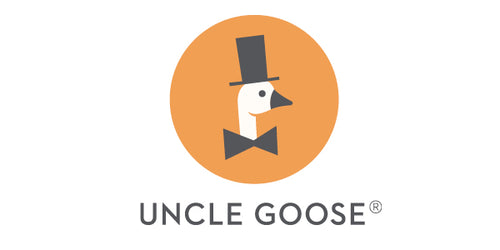
Working Memory + Cognitive Load: Why F isn't on the Fox Block
Your Uncle Goose often gets asked why the first letter of the animal’s name isn’t on the same alphabet block. Short Answer: it has everything to do with working memory, cognitive load, and instructional design. For a longer answer, keep reading!
If someone gave you their phone number, would you be able to remember all ten digits long enough to enter it into your address book? Or if your boss told you a meeting date, time, and place: would you be able to remember this information long enough to put it into your calendar?
Remembering a few details like these require a working memory of around 30 seconds to a minute. A working memory is the ability to accurately hold a little bit of new information in your head for a very short amount of time.
As an adult, you might be surprised to learn that your working memory isn’t as substantial as you might think. For example, look at this number for 10 seconds:
360,304,975
Now close your eyes and repeat the number out loud from memory. For many adults, it’s difficult to remember all 9 digits after looking at them for only a few seconds.
That’s because your working memory is limited to only a little bit of information for a short amount of time. If you try to cram it with too much information all at once: you’ll have a hard time learning.
If you wanted to commit this number to memory, you’d need to learn it. You’d write it down. You’d look at it often. And you’d put it into some kind of context that made it worthwhile or fun to remember.
Now, let’s use what you just learned about working memory and apply it to learning something new. Pretend you’re using alphabet blocks to help a child learn to spell a new and challenging word. For example, you might want your children to learn how to spell F-O-X.

As an adult, you might want to see an "F” on a block with “Fox” on it. This fulfills a sense of order and logic you’ve already internalized.
But children haven’t internalized this logic yet. It’s all new information that goes into their working memory.
To help children learn better and faster, show them the block with the fox illustration on it. You can both see the letters that spell fox under the illustration.
Next, ask the child to find all the blocks that spell the word “fox”. Instead of loading a child’s working memory, let them use the fox block as a reminder of how to spell a new and challenging word. Let them look at it and refer to it often as they search for the letters that spell the word.
By using the fox block as a visual cue, children can reduce the load on their working memory. After all, it might take a minute or two to search for each of the letters to spell the word. And when you help children reduce the cognitive load on working memory, you help them increase their ability to learn new information.

This instructional design approach can provide a better learning outcome. It’s less frustrating. And it’s certainly more fun!
You get the picture. By reducing cognitive load, a child gets an improved learning experience. A child can also enjoy the fun of searching for letters while learning how to use reference guides.
At Uncle Goose, we know that some of our competitors will put a D on a Dog block. That's fine. It's totally fine to design to please the design sensibility of a mature adult.
But at Uncle Goose, we design our ABC blocks for children. As an adult, you might want to see a C on the Crocodile block; but you probably already know how to spell crocodile. When you think about learning from the perspective of a child, the Uncle Goose approach can enhance both learning and fun.
